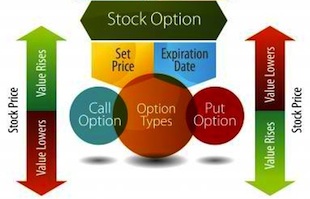 Hello, I’m back after my two week hiatus. For those curious about an amazing bike journey my wife and I made from Amsterdam to Bruges and my socio/economic observations about Europe please see Monday and Tuesday’s entries in The Liss Report (www.thelissreport.com).
Hello, I’m back after my two week hiatus. For those curious about an amazing bike journey my wife and I made from Amsterdam to Bruges and my socio/economic observations about Europe please see Monday and Tuesday’s entries in The Liss Report (www.thelissreport.com).
Now, on to today’s topic: Selling a cash covered put as either a way to generate short term cash or capture an attractive dividend yield. With my own personal twist added on.
I like dividends. I firmly believe companies should return part of their earnings to their owners (ie, the shareholders) as compensation for the risk taken in owning them. As opposed to stock buy backs, which I hate as all they do is pump up management’s stock options, but that’s a whole different discussion.
At this writing only 47 stocks in the entire S&P 500 have a dividend yield in excess of 4%. Remember, dividend yield has an inverse relationship to price.
I will go on to a real life example but before I do that I want to make it very clear that I am neither advising nor recommending any trade or investment. This discussion is for educational purposes only.
Cash Covered Put Strategy (with a twist) example:
Let’s take a look at AT&T (T), for example. At the current price of 35.75 and an annual dividend of 1.80, T has a very respectable dividend yield of 5%.
The August 35 put can be sold today at .80. I will always make sure that I have $3500 in cash or T Bills set aside per one lot sold (hence the term cash covered). If assigned on this put I will be buying T at an effective price of 34.20 (35 – .80) and at that price T has an even better yield of 5.25%. And, of course, if not assigned I pocket the .80.
All well and good, win win, right? Perhaps and perhaps not. If you get a dividend yield of 5.25% and the stock tanks 7% in a crash, you’re not so happy. Therefore, I add this layer of protection: I make the trade a diagonal put spread. I sell the August 35 put at .80 and at the same time I buy the October 32 put at .50. If assigned on the August put I am left with a hedged position, high yielding stock plus protective put. I can wait for an uptick, sell an out of the money call and create a nice zero cost collar. If not assigned, I have the October put at the effective price of minus .30. In other words I have a put for less than free! I can sell that put or sell another put below it, hey, everyone loves free options!
So, that’s my twist on the cash covered put strategy. Overly cautious, maybe, but that’s me. My many years in this business have taught me, if nothing else, prudence and caution.
Twitter: @RandallLiss
Any opinions expressed herein are solely those of the author, and do not in any way represent the views or opinions of any other person or entity.







